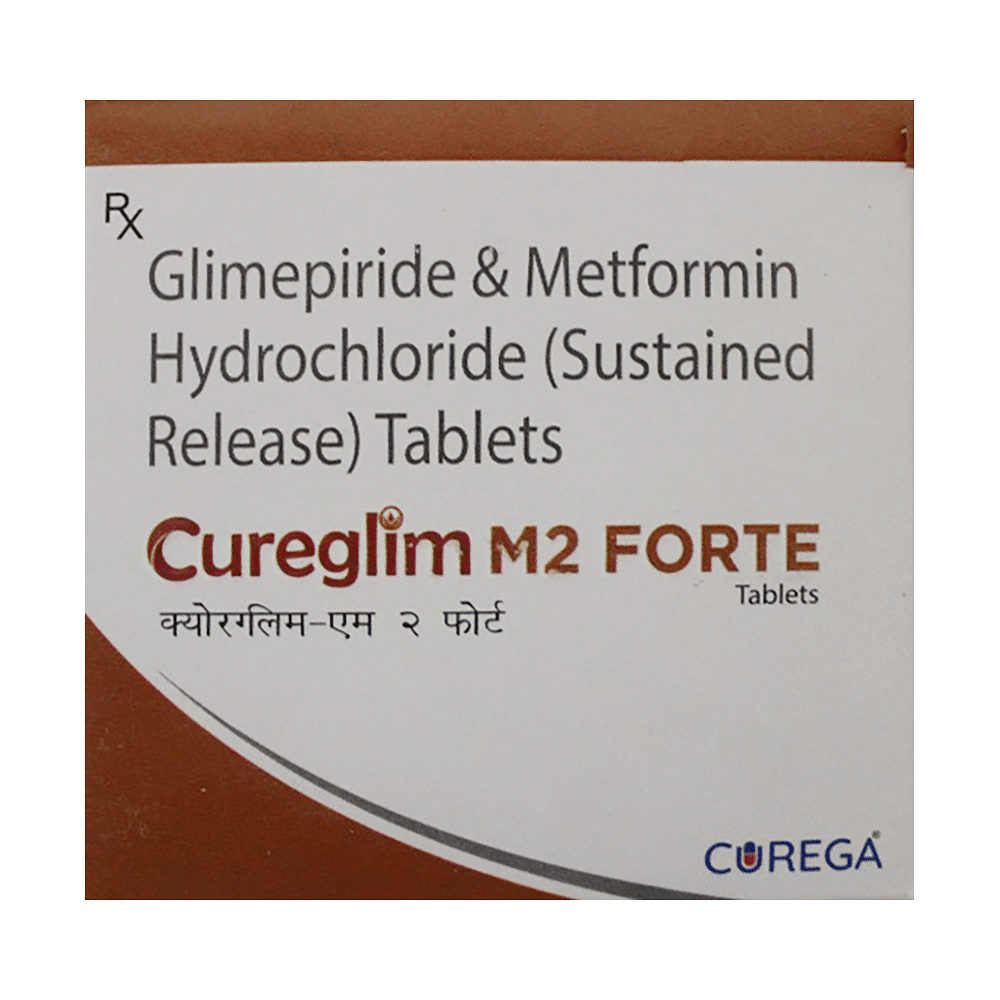
Glycirest-G2 Forte Tablet SR
Manufacturer
Innovative Pharmaceuticals
Salt Composition
Glimepiride (2mg) + Metformin (1000mg)
Key Information
Short Description
Glycirest-G2 Forte Tablet SR is a combination of two medicines used to treat type 2 diabetes mellitus in adults.
Dosage Form
Tablet SR
Introduction
Glycirest-G2 Forte Tablet SR is a combination of two medicines used to treat type 2 diabetes mellitus in adults. It helps control blood sugar levels in people with diabetes.
Directions for Use
Take this medicine in the dose and duration as advised by your doctor. Swallow it as a whole. Do not chew, crush or break it. Glycirest-G2 Forte Tablet SR is to be taken with food.
How it works
Glycirest-G2 Forte Tablet SR is a combination of two antidiabetic medicines: Glimepiride and Metformin. Glimepiride is a sulfonylurea which works by increasing the amount of insulin released by the pancreas in order to lower the blood glucose. Metformin is a biguanide which works by lowering glucose production in the liver, delaying glucose absorption from intestines and increasing the body's sensitivity to insulin.
Quick Tips
You have been prescribed this combination medicine as it can control blood sugar better than metformin alone. You should continue to exercise regularly eat a healthy diet and take your other diabetes medicines along with Glycirest-G2 Forte Tablet SR. Take it with food to lower your chance of having an upset stomach. Monitor your blood sugar level regularly while you are taking this medicine. It can cause hypoglycemia (low blood sugar level) when used with other antidiabetic medicines, alcohol or if you delay or miss a meal. Inform your doctor about your diabetes treatment if you are due to have surgery under a general anesthetic. Tell your doctor immediately if you experience any deep or rapid breathing or if you have persistent nausea, vomiting and stomach pain as Glycirest-G2 Forte Tablet SR may cause a rare but serious condition called lactic acidosis which is an excess of lactic acid in the blood.
Related Medicines

Gepride M-2 Forte Tablet

Geniride M 2mg/1000mg Tablet SR

Glimoris M Forte 2mg/1000mg Tablet SR

Cureglim M 2 Forte Tablet SR

Gletan M Forte 2mg/1000mg Tablet SR

Glyshield-G2 Forte Tablet SR

Glimin M Forte 2mg/1000mg Tablet SR

Glycinova G2 Forte Tablet SR

Glimnac M Plus 2mg/1000mg Tablet SR

Glimed MF 2mg/1000mg Tablet SR
Frequently asked questions
What are the recommended storage conditions for Glycirest-G2 Forte Tablet SR?
Keep this medicine in its original container or pack, tightly closed. Store it according to the instructions provided on the packaging label. Dispose of any unused medication.
Can the use of Glycirest-G2 Forte Tablet SR lead to lactic acidosis?
Yes, using Glycirest-G2 Forte Tablet SR can increase the risk of lactic acidosis. This is a medical emergency that results from high levels of lactic acid in the blood. It may also be known as MALA (Metformin-associated lactic acidosis). It's important to note that this side effect is rare and is generally associated with metformin use, making it particularly relevant for patients with pre-existing kidney issues, those who are older, or who consume high quantities of alcohol.
What is Glycirest-G2 Forte Tablet SR?
Glycirest-G2 Forte Tablet SR contains two active ingredients: Glimepiride and Metformin. This combination is used to treat type 2 diabetes mellitus (DM). It helps control blood glucose levels in adults by working alongside diet and exercise.
What are the possible side effects of Glycirest-G2 Forte Tablet SR?
Like many medications, Glycirest-G2 Forte Tablet SR can cause common side effects like hypoglycemia (low blood sugar), altered taste, nausea, stomach pain, diarrhea, and headache. It's essential to monitor your blood sugar levels regularly while taking this medication.
Can the use of Glycirest-G2 Forte Tablet SR lead to Vitamin B12 deficiency?
Yes, long-term use of Glycirest-G2 Forte Tablet SR can lead to a lack of Vitamin B12 due to its interference with the absorption of Vitamin B12 in the stomach. Untreated, this deficiency may cause anemia and nerve problems, leading to tingling sensations in the hands and feet, weakness, urinary issues, changes in mental status, and difficulty maintaining balance (ataxia). It is recommended that patients maintain a regular intake of Vitamin B12 through dietary sources at least once annually.
Can the use of Glycirest-G2 Forte Tablet SR cause hypoglycemia?
Yes, Glycirest-G2 Forte Tablet SR can cause hypoglycemia (low blood sugar level). Common symptoms include nausea, headache, irritability, hunger, sweating, dizziness, fast heart rate, and feelings of anxiety or shakiness. It's important to note that this risk is amplified when you miss meals, drink alcohol, engage in excessive exercise, or combine it with other diabetes medications.
Is it safe to take alcohol while I am also taking Glycirest-G2 Forte Tablet SR?
No, combining alcohol with Glycirest-G2 Forte Tablet SR is not advised. It can decrease blood sugar levels and lead to hypoglycemia. Additionally, alcohol may increase the risk of lactic acidosis.


